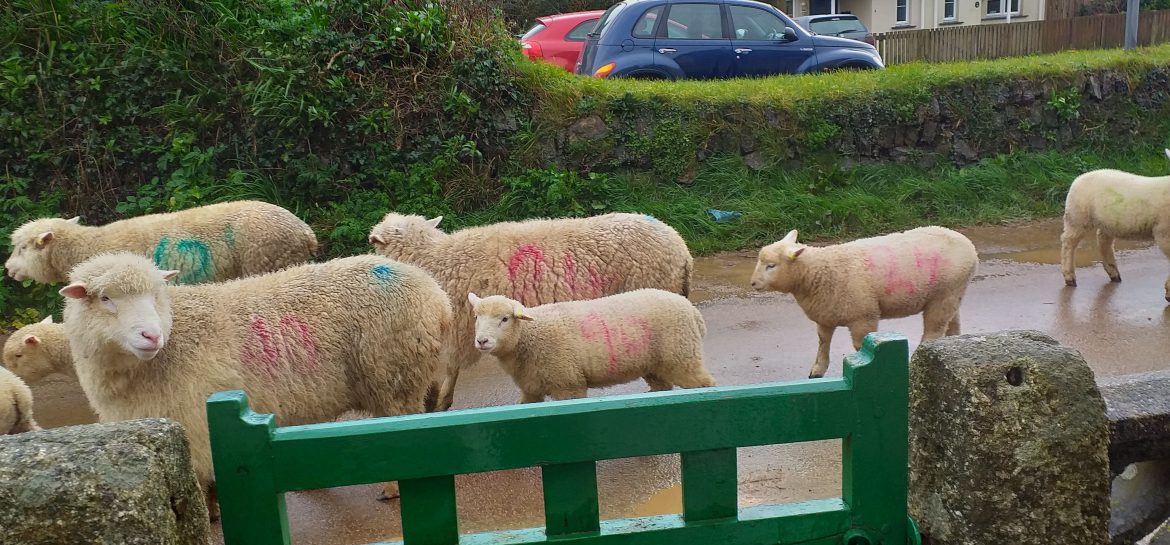
Priscilla Oates brings us the story of a little village on the Lizard, Cury. It was where she was born and is a place to which she has “come back home”.
CURY – the Conversation
“Cury?
“That drive through place, just houses and traffic calming things.”
“In Somerset, isn’t it?”
Just some of the reactions you get when you tell someone you come from Cury.
So where is Cury?
It’s a little village on the west side of The Lizard Peninsula, 200ft / 60m above sea level, with a population just below 400 inhabitants. Sited on the top of a hill in full force of good souwesterly gales with two valleys, one runs down to Poldhu cove of Marconi fame, and the other runs down to Gunwalloe Church Cove, nowadays better known for Poldark and other film sets. More importantly to me, it is my home where I was born and bred.
Get off the road through the houses and the speed bumps, come with me and I will show you a settlement inhabited for thousands of years. From extant Iron Age structures and archaeological evidence through the Romano British Period, to early medieval settlements and the present day.
“It’s a bit of a funny name though isn’t it?”
Well, I suppose we could have followed other villages and been called St Cury, instead of Egloscury as we would have been originally. Cury is actually the pet or diminutive version of Corantyn, our saint to whom our church is dedicated. We are not quite sure whether he was a Cornishman or a Breton, however his seat is at the Cathedral in Quimper in Britany. He was apparently not very tall and was referred to as “Little Corantyn”, hence the pet name of Cury. By the way, Corantyn is pronounced “Curantyn”. So, there you are, we are Cury or the place of Little Corantyn. As far as I know the only other name we have had is Chori as we are called in The Domesday Book, but even there you can see the connection.
“Another strange thing I’ve noticed is that there seem to be several different Curys next door to each other according to the village signs”
Yes, it does look a bit like that. Actually, Cury consists of several hamlets and it does not really have a village centre. The original centre is the Church Town where people would have lived around the church. The pub and post office are a good Cornish mile away in Cross Lanes: the village hall is in White Cross. Nanthithet’s claim to fame was the cobbler’s shop. When I was a child the stream ran across the road as a proper ford and the game was to try riding your bike through it without falling off when it was running high a couple of hours after heavy rain. The other hamlet is Millpool, a much bigger settlement during the Middle Ages, but with little to show above ground these days. Although Ron at Transingove has done a considerable amount of dousing and has been able to plot the remains of quite a substantial settlement there.
 St Corentyn’s Church, Cury, with its cross © Paul Phillips
St Corentyn’s Church, Cury, with its cross © Paul Phillips
“The cross in the churchyard isn’t the usual Celtic one is it?”
No, it’s more like a tall waymark stone, although it has an inscribed cross on the south side facing the river, which in earlier times would have been an entry point from the sea. Quite possibly this was Corantyn’s entry / exit point. We don’t really know when the cross was put there. At some point it was removed, perhaps as a result of the Prayer Book Rebellion. It was found much later buried in a ditch under a nearby hedge and restored inside the “Lan” where you see it today. Being so tall, it was a good place to hide from your parents on a Sunday morning! Incidentally, the property opposite the cross has been a tithe barn and a dame school long before any education acts came into being, and a coach house for the squire’s coach and horses while he attended church.
Sometime I’ll take you round the inside of the church. Parts are Norman, and there are Celtic eternal rings carved over the door and we have a lepers’ squint (1). There must have been a monk’s cell here from very early times, probably during the Age of Saints (2). We have a list of priests who served here dating from 1208 with Willian FitzRichard being the first recorded. His dates are given as 1208 to 1214 with a note that he “died or resigned during the Interdict”. The buildings must have fallen into disrepair as there was a cell of monks sent from Hailes Abbey to build a church to replace a much earlier one on the site. The monks arrived in 1246 and did not leave until c.1450. It is also the right place to tell you about Fr Sandys Wason, highly respected by his congregation and highly disliked by the Methodists who accused him of “Popery”.
 Lepers’ squint © Paul Phillips
Lepers’ squint © Paul Phillips
The field to the south of the church is known as “Great Court” and there are archaeological remains suggesting it had some connection with the monks although it is believed that they were also active at White Cross. They were Cistercians, the “White Monks” from the colour of their habits. In White Cross there are two place names which suggest that they might have been there. Lamana and Nanplough in earlier Cornish suggesting the fields and lands of the monks. I was born in Lamana, granny’s house, so it is a bit special to me.
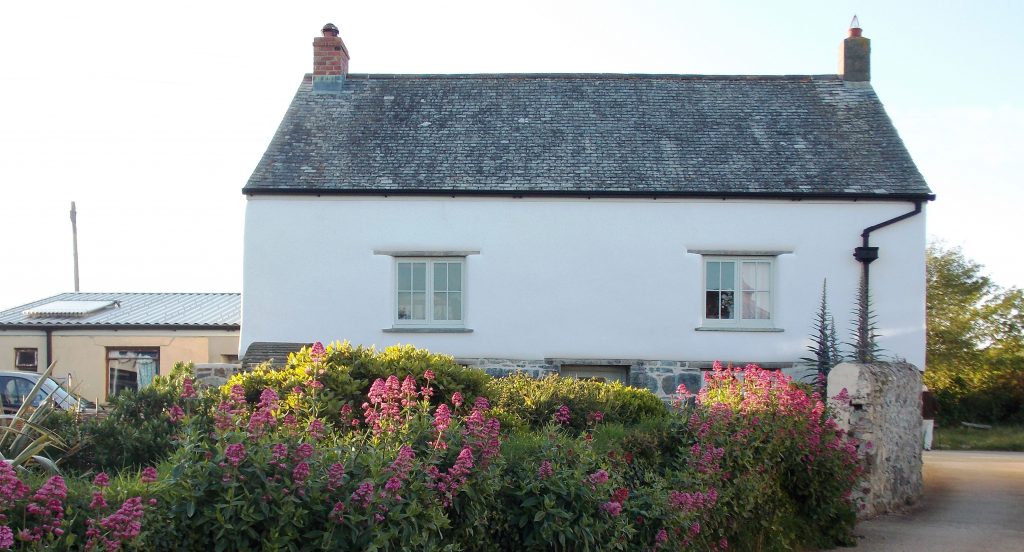
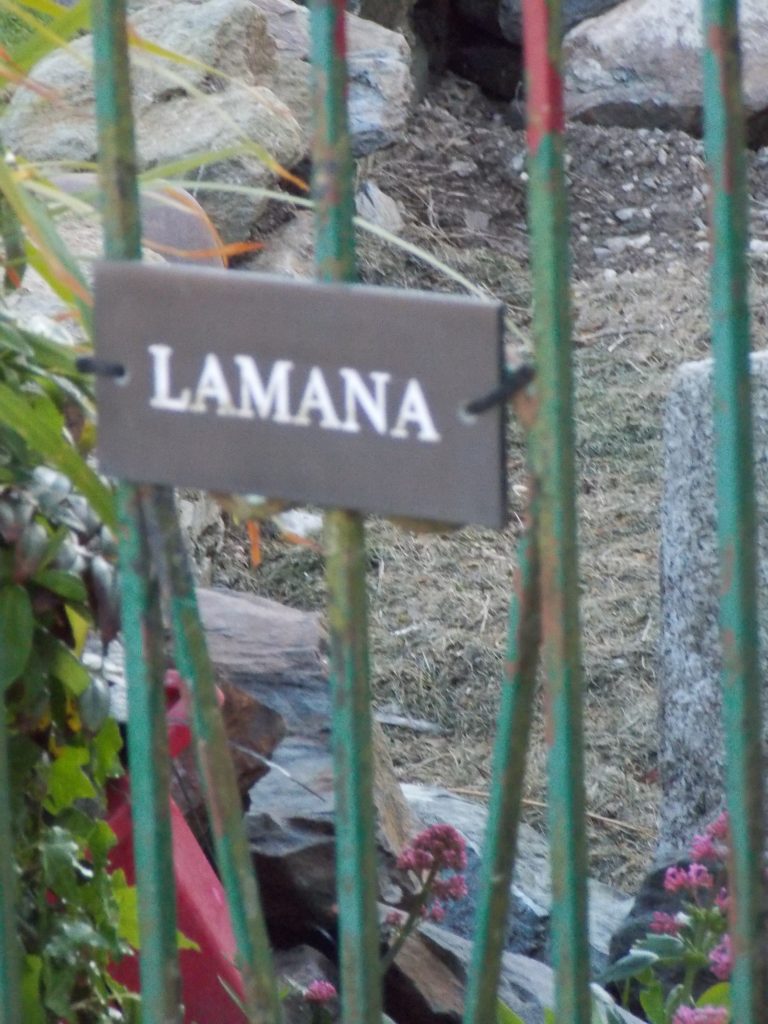 Lamana Cottage and Gate © Paul Phillips
Lamana Cottage and Gate © Paul Phillips
White Cross also has three Methodist chapels still standing, only one of which is still used as a chapel. The oldest having been converted into the carpenter’s shop where my father was one of the carpenters, is now a private garage, the other is a large house.
 The old chapel which became a carpenter’s shop © Penelope Oates
The old chapel which became a carpenter’s shop © Penelope Oates
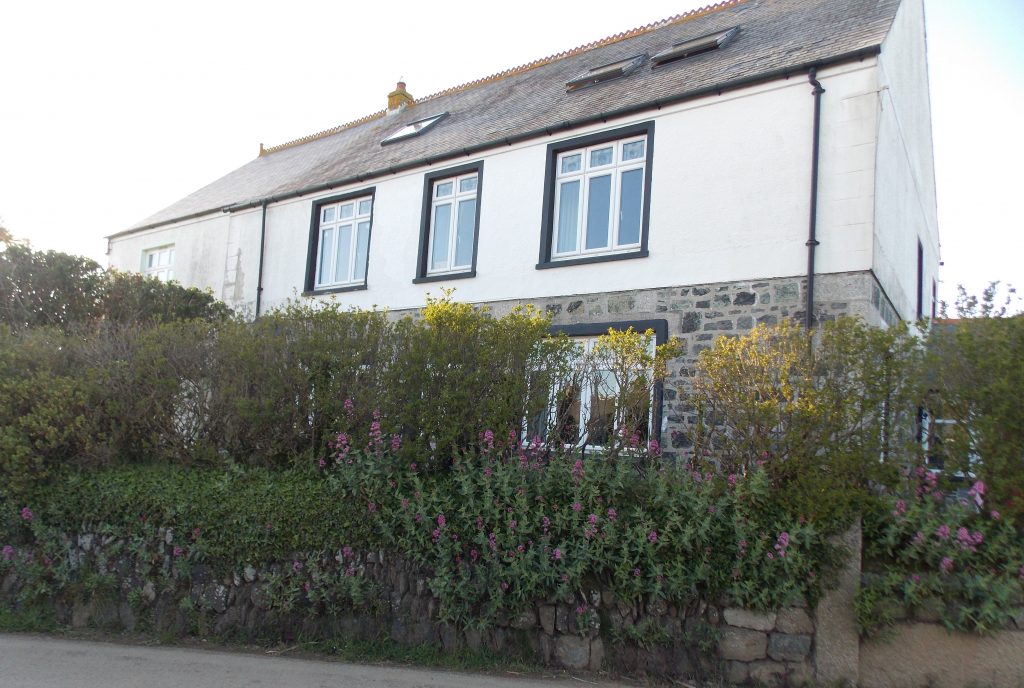 Tolverne, a large House © Paul Phillips
Tolverne, a large House © Paul Phillips
“So, the original settlement was a sort of religious one?”
Well, if you mean the medieval one as opposed to the Romano-British one, yes. Although by Domesday we had three manors in Cury, Bochym, Skewes and Polwin.
Bochym, with its Home Farm is probably the best known, for its ghosts if nothing else. It has a lady ghost who will walk at any time and a team of horses with rattling chains who race from Chypons Hill down the front drive to the front door. Bochym, like most manors, has had its good times and bad. During the Prayer Book Rebellion it was owned by John Winslade who was a leader of the Cornish rebels. When the rebellion was finally crushed he was hanged and dismembered at Tyburn and all his lands were sequestered and given to Sir Peter Carew unless they had already been legally handed over to his wife, Anne. She was indeed the owner of Bochym, so the estate was safe. She later married John Trevanion who unfortunately made sure her son William Winslade would never come into his father’s estates. Trevanion sold Bochym to the Mohuns. Another outcome of Winslade’s position during the Prayer Book Rebellion was that Cury Church was one of the first, if not the first, to conduct its Mass in English. A problem for the parishioners as they did not speak English, only Cornish, but could follow the Mass in Latin.
Skewes was dismembered as a manor quite early on but still has its Home Farm and a claim to fame. In the fifteenth century, John Skewes of Skewes became a lawyer and was admitted to Lincoln’s Inn Fields in 1487. By 1531 he was one of the chief legal officers to Cardinal Wolsey. He became rich and powerful, owning not only Skewes but several other manors throughout Cornwall. When he died, he left 40 pounds to the Church of St Corantyn, Cury, towards the building of an ambulatory on the south side. However, it was not built at the time.
Polwin is probably the least known, but still has its Home Farm. My grandfather was the horseman there in the 1920s and when Mum started school at Church Town, aged 4, she had about a six mile walk to school and back each day along the main road, lanes and across the fields. As she used to remind us, “In all winds and weather”.
“So, Cross Lanes was important then?
Yes, Cross Lanes is on the main Helston to Lizard road and for many years was the commercial hub of the village. In the nineteenth century it not only had a long-standing pub, The Wheel Inn, but also across the road from it was The Temperance Hotel. Sadly, The Wheel has recently closed and all that was left of The Temperance Hotel by the 1950s was the forecourt which is now a lay-by and a beautiful rose from its garden which now blooms in the hedge. The Temperance had stables and a “Put on / Take Off Stone” where an extra horse was either added or removed from the team pulling the wagons and other vehicles either going up or down Bochym Hill. There was a blacksmith’s shop just down the road.
Plans were first drawn up for the Helston Railway to continue from Helston to The Lizard but when this did not materialise, a Jersey Bus, drawn by a team of horses was provided – Cury’s answer to a wild west stagecoach. It had its main stop at the post office near the Wheel Inn. Here, all the post for all other villages on the peninsula was loaded or offloaded. All villages had to send a person to Cury to collect the post for their village. This was an important position for Cury Post Office and is the reason that all our postal addresses are “Cury Cross Lanes” even if we do not live in Cross Lanes. Again, sadly, the post office has closed and we now have a mobile one for two hours one day a week at the village hall.
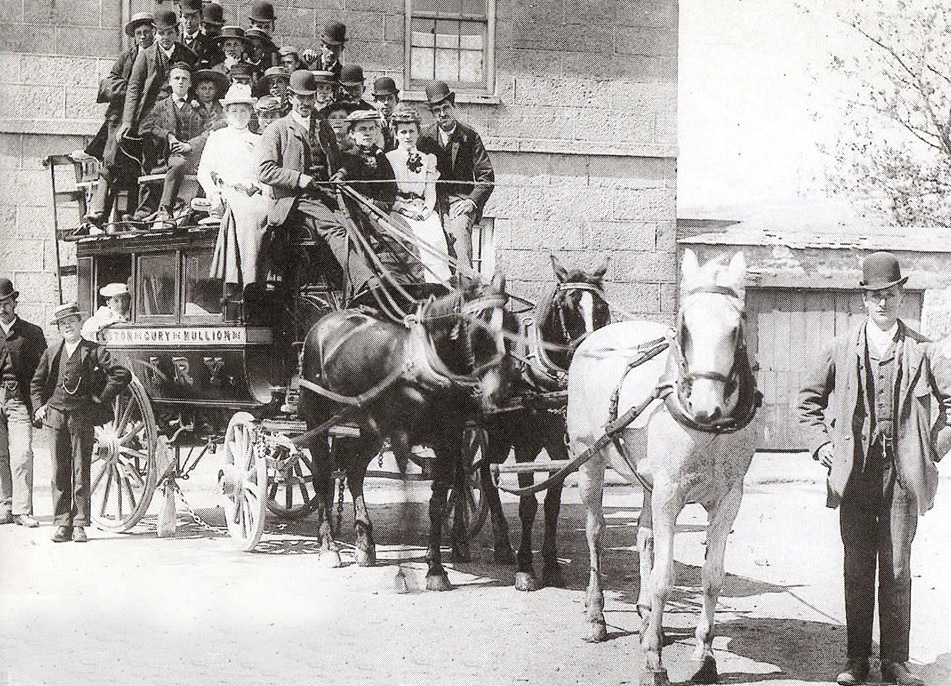 c. 1900 – Horse drawn Bus: Helston – Cury – Mullion. Note Mullion on side of the bus © Royal Institution of Cornwall
c. 1900 – Horse drawn Bus: Helston – Cury – Mullion. Note Mullion on side of the bus © Royal Institution of Cornwall
Of course, we are still at the cutting edge of technology here in this part of Cury today. Go up the Hill, past the “Big House” of Bonython, and you are soon on Goonhilly. Here, in a corner of our parish, ancient barrows stand next to the modern scientific “saucers” of the Earth Station. We don’t just exist in the past you know!
“Thinking about the village hall, it looks very old”.
It is. It was a WMCA mess hut up at R.N.A.S. Mullion on Goonhilly during the First World War. Most of the young men in Cury were in reserved occupations but were required to do some “War Work” as well. My grandfather was detailed to be a barrage balloon handler up there, being told, “If you can handle a rearing horse you can handle of balloon in the wind”. At that time there was no village hall in Cury. So, at the end of the war, all the young men put their demob money together and bought the YMCA mess hut. It took them until 1921 to get everything in place such as an offer of a piece of land to put it on, together with all the legalities and so on. Then, one weekend, it was brought down to White Cross. My grandfather and several others borrowed Mr Dick Thomas’s horse and cart, painted a number on each piece of wood and galvanise, and loaded it onto the cart. It took them the whole weekend to bring it down from The Downs and re-assemble it in White Cross, on a piece of land given by Mr Frethey, where it still stands. The trustees are planning special events to celebrate the centenary in 2021.
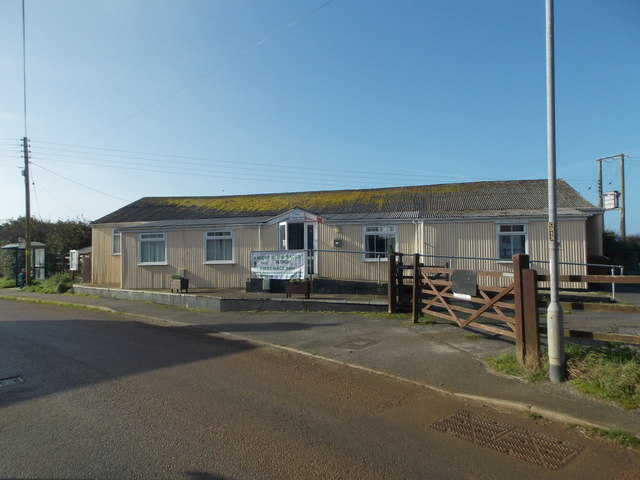 The Village Hall © Paul Phillips
The Village Hall © Paul Phillips
What about feasts and such like?
Yes, we have all the usual festivals. At Easter, when until fairly recently it was the custom on Good Friday, after the church service to go “Trigging” down at Helford. This was a whole family occasion to collect cockles from the riverbed and bring them home to cook for a supper treat. At Christmas, the usual village parties for the children, and the older members of the village in the hall, and a parish lunch held there on the Sunday before Christmas. There is a village show in September every year. More recently we have re-introduced The Blessing of the Plough on Plough Sunday, this being held in Great Court, the field and plough being kindly supplied by farmers Jeffrey and Alan.
“I’m sure you have other things to tell me about, the village pump and the ladies tennis club for instance?”
Hmm, yes, but if Bochym Clock were still striking, it would tell us that it’s time to go home for tea!
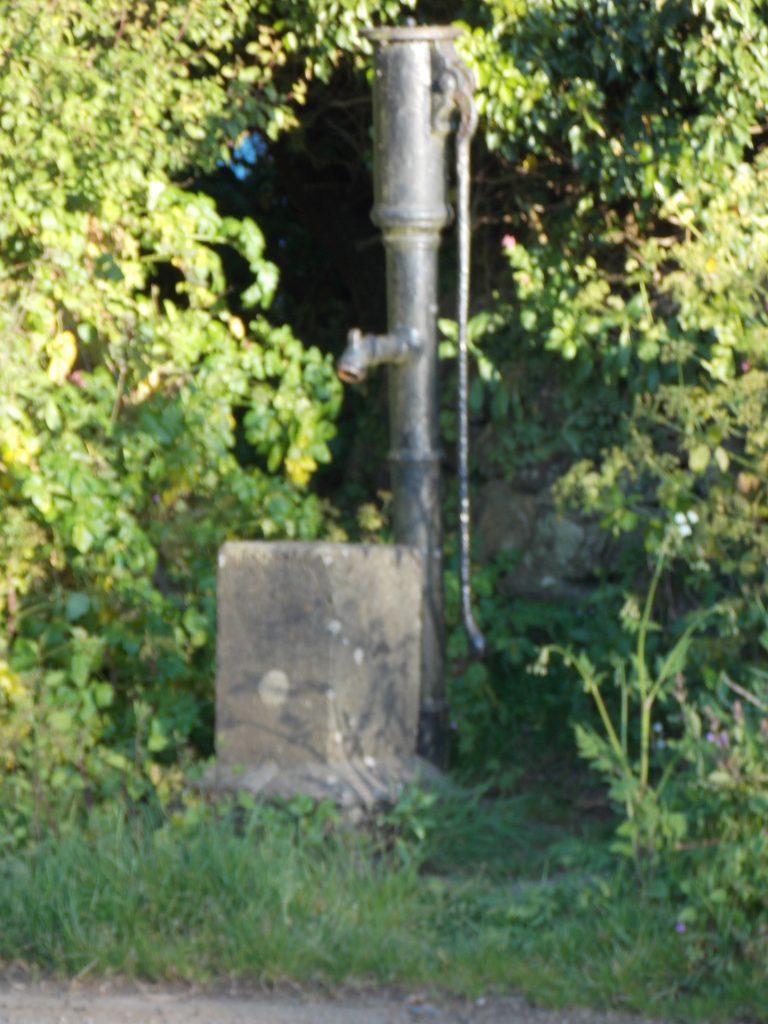 The Village Pump © Paul Phillips
The Village Pump © Paul Phillips
Cover Photograph: “Rush Hour in Cury” © Penelope Oates
End notes:
- A squint is a term denoting a small splayed opening through a masonry wall of a church in an oblique direction giving worshippers a view of the altar.
- The 5th and 6th centuries are often referred to as the “Age of Saints”.
References:
The Domesday Book-Cornwall. Phillimore1979
Skues, Keith. Cornish Heritage. Werner Shaw, London 1983
Various books and articles on the Prayer Book Rebellion.
Framed Documents kept in St Corentyn’s Church:
Cury Parish Church, Written by Revd. W V Wagner 1923
The Priest’s List, courtesy of the Conder Family,
Photographs:
Unless otherwise acknowledged, all photographs have been taken by Paul Phillips during the last two years.
Oral History:
I am indebted to the following for all the snippets passed on over the years:
My parents Pearl and Henry Oates
My grandparents Daisy and Arthur (Artie) Curtis
My sister Penelope
Eileen Sobey
Philip Greet
The “old families” of Cury
My friend Teresa for the conversations!
Angela Broome at The Courtney Library
Tony Mansell for his advice and patience
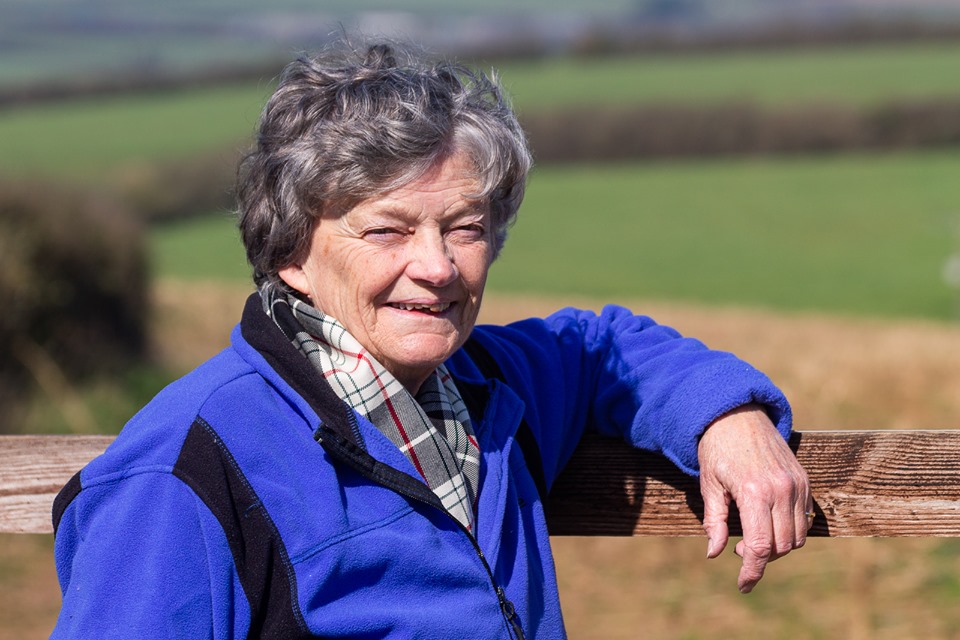 Priscilla Oates ©Kyle Greet, March 2020
Priscilla Oates ©Kyle Greet, March 2020
Priscilla Oates, a Cury girl, was educated at Cury C. of E. V.P. School, The County Grammar School, Helston, and St Gabriel’s College, University of London Institute of Education. At St Gabriel’s she obtained an Advanced Certificate of Education, the highest teaching qualification at a time when teaching was a vocation and no education degree existed. She spent her professional life as a teacher of Secondary Science, having been offered a position at a school in Hertfordshire by a Cornish headmaster, Rex Tregunna of St Stephens. When an education degree was eventually available Priscilla, after working a full timetable daily, studied two evenings a week and part of every weekend for seven years, to get her degrees. She achieved a B.Ed.(hons), (Batchelor of Education with Honours) and a M.Sc. (Master of Science) from Birkbeck College University of London. On retiring she became a governor of Cury School, serving three years as chair of governors, before finally deciding it was time that she “left school”.
Priscilla is a church warden at St Corentyn’s and a parish councillor for Cury.
She is also a trustee of Cury Village Hall, the area representative of Cornwall Archaeology Society for the Lizard Peninsula West, and chairman of Cury and Gunwalloe Old Cornwall Society. She has been involved in the Old Cornwall Movement from her school days at Helston, a past chairman of the London Cornish Association, and still a member of London and Thames Valley Old Cornwall Associations, a past chairman of Mullion Old Cornwall Society and a past president of the Federation of Old Cornwall Societies.
Having been involved in Girlguiding since she was 14, at all levels from local unit to Girl Guides Association UK, she was recently presented with her 50-year Leader’s Service Bar and honoured by being made a Life Member of Girlguiding Kernow.
In her spare time, she can often be found walking with friends on Dartmoor!

As from Saturday you can add Bard of Gorsedh Kernow, hope it is a lovely experience for all new bards
Wonderful account of Cury and its history.
Have known Pricilla since I was a Girl Guide in Helston as a young girl, where she was a leader with Mrs Slade.
A most interesting account of the life of such a little village, so important in its day.
Enjoyed again!
What a fascinating and interesting account of Cury and the surroundings. Such family history as well. We all want to come and visit now and see the places in these lovely photographs. Well done Priscilla for all you have achieved.
Very interesting , nice to be able to read about the History of our Village
Wonderful, interesting read of the parish, id love to learn more about Nanplough!
I’m a Winslade, well was before marriage. Living just through the lanes from Bochym While not previously knowing a Winslade once owned the Manor it was quite a surprise when I learned about it some 12 years ago.
Priscilla gave a talk to Mullion WI in January 2012 on the Prayer Book Rebellion that I intended to go to, but very sadly our eldest son died and we had to travel to Seattle for his funeral. I’ve hoped eversince to read a précis of her talk.
Very interesting. My great grandmother, Mary Skewes, emigrated from Cury to South Australia in the late1860s or early 1870s. She came out alone, a single woman in her late 20s, not sure why, but it could have been to visit or attend the wedding of her cousin. Samuel Skewes, and there was some connection by marriage, I believe to the Bonythons. Her father, Edward, who lived at Nantithet, was a cordwainer (shoemaker) according to Cornwall censuses. Mary’s siblings included Edith and Edward, who I believe lived in Bonython Hall at some stage. I would love to get over to see Cury, if ever Covid lets me!
I came across this by chance.
Rex Tregunna was my old headmaster in Welwyn Garden City.
Let us say we were both friends and adversaries, but I still think fondly of him.
He was always very proud of his Cornish heritage.
Rob
Hi Cilla it is Carol Young here ( nee Fleckney) you were my captain at Guides then District commissioner and Captain to my daughter Emma Thorpe ( nee You f) so interesting to read this history. I have always managed to keep in touch by post but just can’t find your cottage. Would love to meet up again!
Hi my grandmother was born and raised in Cury her family name was Dungy and I believe her mother was Martha Dungy who died young, some family members say she committed suicide. The family had a lot of land but Mr Dungy eventually became a drunk and lost his land, if anyone knows of the Dungy family name I would appreciate any information many thanks Jean
Dick Dungey is still alive in his 90’s. He lives in Mullion and was originally from Cury.
Dear Priscilla
I was fascinated by your article. I used to know the farmer’s wife at a farm in Cury Cross Lanes. Her maiden name was Margaret Lane and I recall that she married a military man. I forget the name of their farm unfortunately. Margaret and I first met in the 1950s when my family holidayed at her parents’ cottage in Mullion Cove. I’d be fascinated to know whether you or anyone can add details to this happy memory of mine.